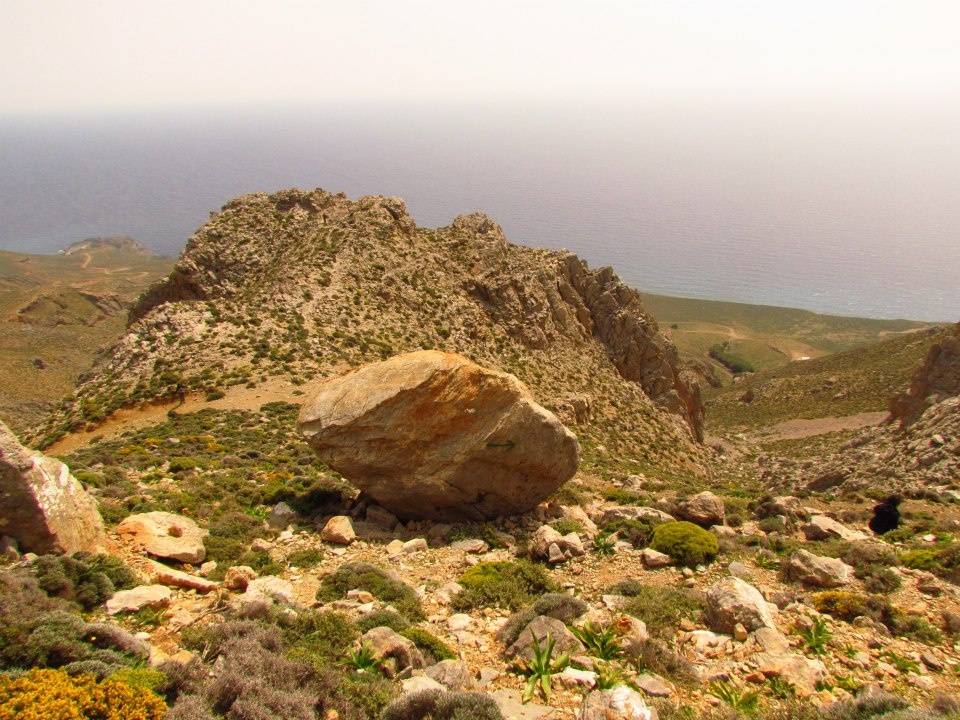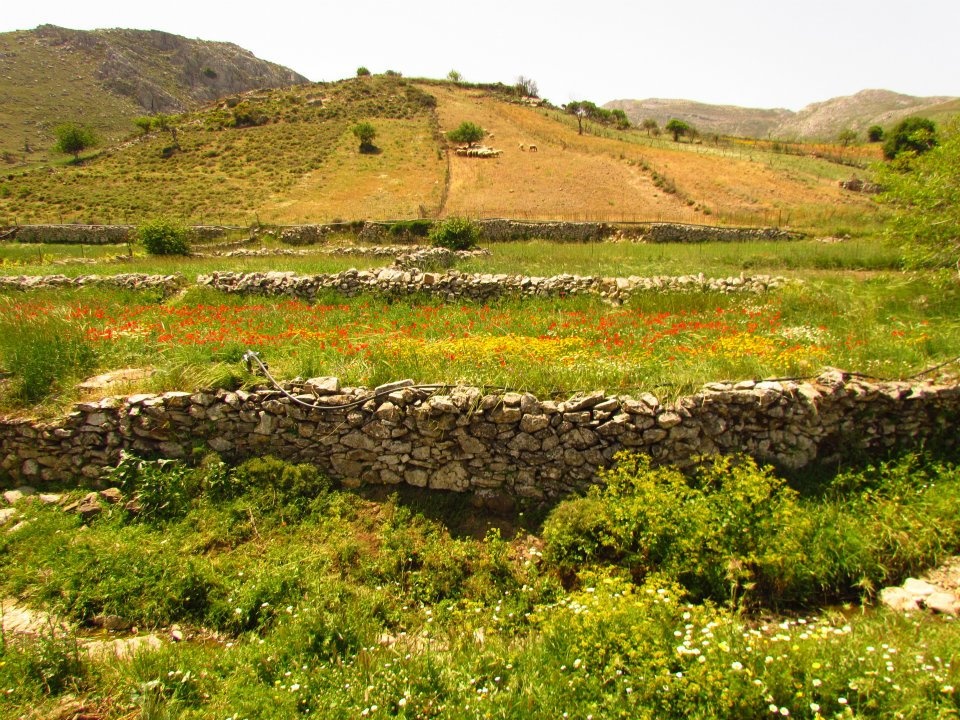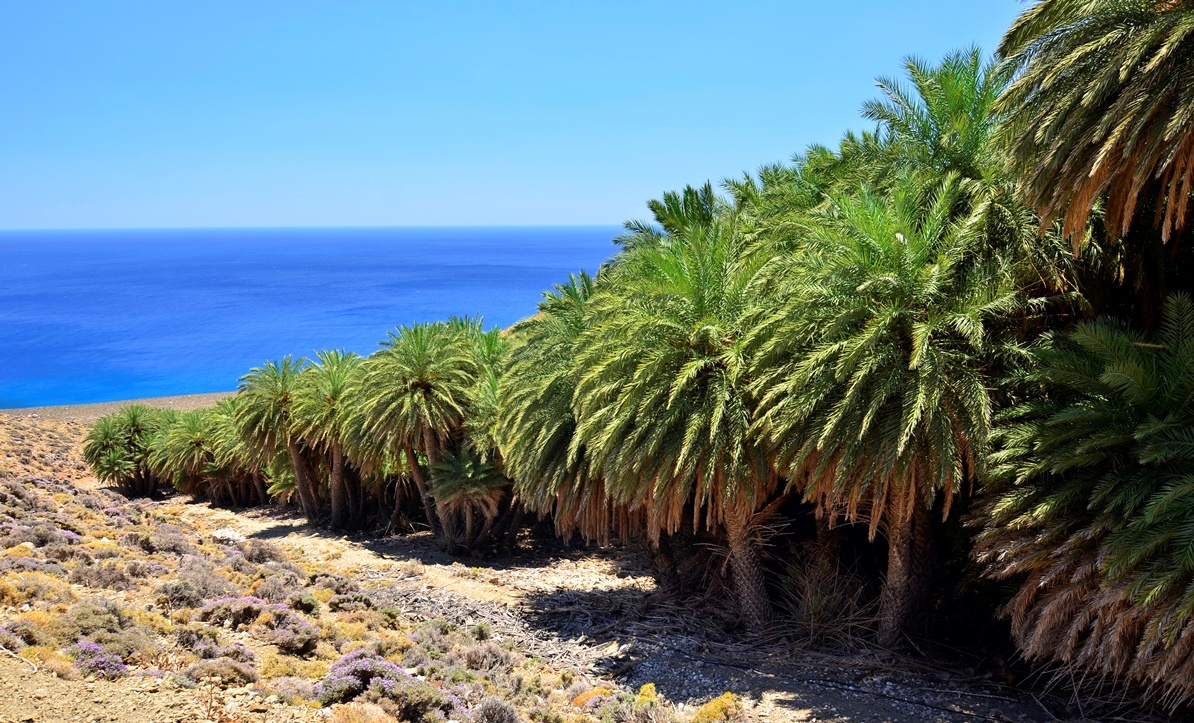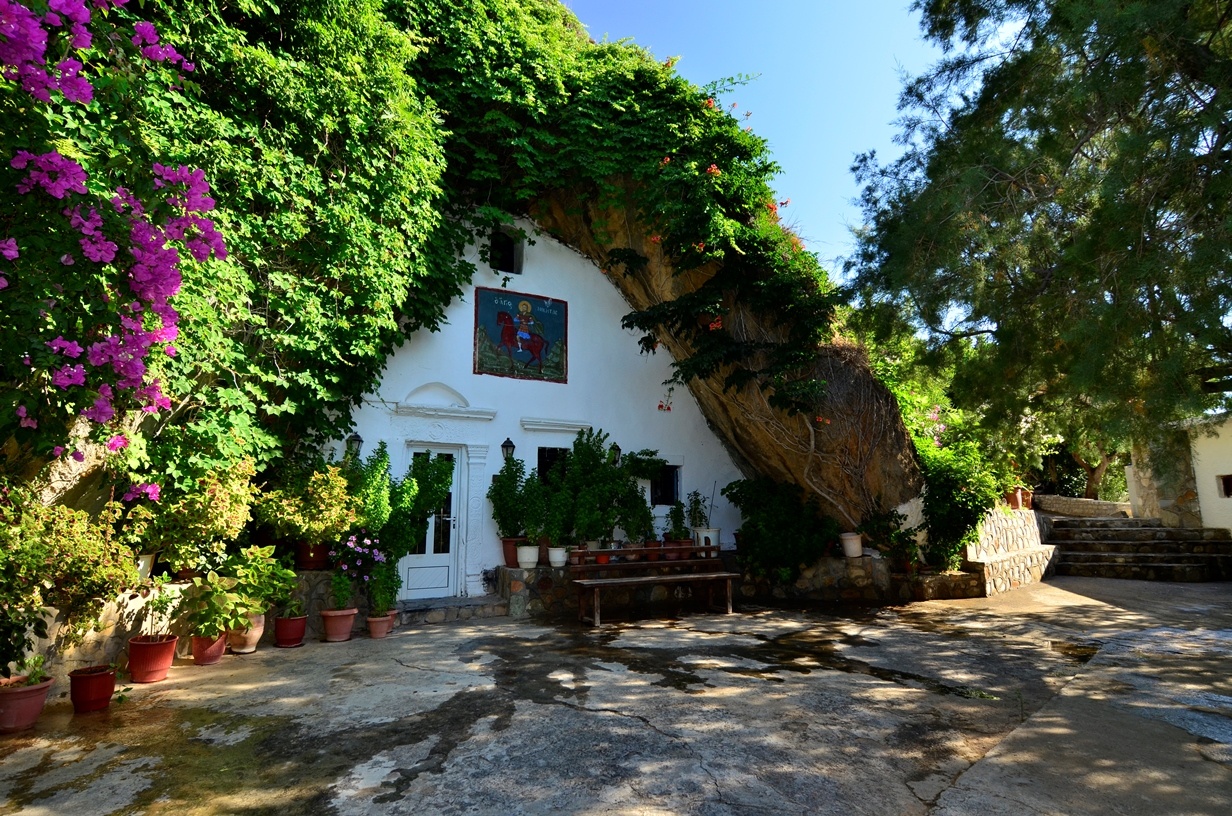
Nearest hamlets: Achentrias, Maridaki
Distance: 8km
Duration: 3 hours
Entrance coordinates: 34° 58.938'N / 25° 14.127'E (Achentrias - Steiromantra)
Exit coordinates: 34° 57.956'N / 25° 15.345'E (Agios Nikitas Monastery)
Trail type: Goat path without markers
Difficulty: Moderate. Experience in trekking is required, as the path is not clearly visible
Recommended season: Spring, summer, autumn (beware of rainfall and high temperatures)
Amenities: Cafés at Achentrias 'Kefalovrisi' spring, monk cells available for tourists at Agios Nikitas Monastery (following arrangements with the caretaker, the only permanent resident at the monastery)
This is one of the most interesting trails in the Asterousia Mountain Range, which has always connected Achentrias with Agios Nikitas Monastery. Follow the southernmost dirt road leading out of the village and park at ‘Steiromantra’, where the road ends. This is where the hike starts, heading SE, up the rise through ‘Stenos Poros’; at the top you can make out the small seasonal lake, ‘Tourkou Lakkos’. After the lake, continue heading SE trying to locate the traces of the old trail. Until the point where the steep slope begins, look for markings on the rocks that will make things easier for you. From then on, there are fewer markings; looking down you can make out the green strip of the palm forest that is your destination. It is where you can find ‘Kefalovrysi’ [a water spring] and Agios Antonios Chapel. The trail ends at the dirt road that you must follow to reach Agios Nikitas Monastery, where you can spend the night, as you can also do on the deserted beach, which the steps immediately beneath the monastery lead to.
Download the kml file of the route in your device: (kml) Achentrias - Agios Nikitas Monastery
Achentrias

Achentrias or Ochentrias (the village with the many Ochentres, a non-venomous viper species found on Crete) is one of the most typical examples of a lively animal raising village in the Asterousia. It is located on a small, cultivated plateau to the west of Asfentylia and to the north of the cliffs and gorges that lead to the southern coastline. The aesthetic value of the plateau of Achentrias is matched by its ecological importance in preserving the biodiversity of the Protected Area of the Asterousia.
Most of the villagers are animal farmers and, to a lesser extent, work the land. The main products come from goats and sheep (meat, milk and various cheeses) and the excellent flavour and quality of the cheese produced here, at the uniquely built mitata (plural of mitato, stone huts on mountain peaks) of the area, is well known.
The village is downhill from Mount Asfentylias, an ideal juncture for the entire south of Crete, as there are but few obstacles. This is why a television broadcasting antenna was installed in 1970 on its 970.43m peak, which unquestionably affects the otherwise spectacular view towards the entire Mesara Valley, the Sea of Crete and the island of Dia. On this mountain, an ongoing survey by the Natural History Museum of Crete is after a very rare animal fossil, argued to have lived here, but has not been matched to any known animals until now.
Some of the most beautiful hiking trails of this mountainous zone start at Achentrias. Signs with maps and descriptions that will help you approach them safely are located at the starting points of the trails. The most beautiful trail is the one that has always connected Achentrias with the Holy Monastery of St. Nikitas, with the renowned palm forest and water spring, Kefalovrysi. Animal farmers continue to wash their sheep in the sea on St. Nikitas beach to this day, usually in late spring, in order to clean them.
Two more wonderful trails connect Achentrias with the seaside hamlet of Maridaki, through two gorges. One is Ligiofarango and the other Lichnistis.
Churches, celebrations
The village churches are those of Agios Dimitrios (St. Demetrius), Kimisis tis Theotokou (Dormition of Mary), Agios Charalambos (St. Charalambos) and Agios Ioannis Theologos (St. John the Theologian). On August 6 Achentrias celebrates the Transfiguration of Christ with a festival.
Palm forest of Agios Nikitas

The small palm forest of Saint Antonios is situated next to St. Nikitas Monastery. This oasis stands along a stream which springs from Kefalovrisi, a steady spring of water in the middle of the green belt. The forest is made of palm trees of the Phoenix theophrasti species (Cretan date palm), which can be found in few locations on Crete, and is, therefore, protected by the Forest Service. The forest is enclosed by a fence to prevent goats from grazing there.
The Cretan date palm is a small-sized phoenix tree native to the east Mediterranean, confined to few areas, mainly on Crete and, specifically, Vai (a beach in the Municipality of Lasithi), the Preveli Beach (on the south coast of the Municipality of Rethimno). The Asterousia Mountain Range, where you are, is the only location in Crete where these palms grow away from the sea.
Species biology
This palm grows up to 15 meters high, and usually has very thin branches. The leaves are pinnate, 2-3 meters long and feature multiple, unbending greyish-green linear leaflets, 15-50cm long, on either side of the central stalk. The fruit is an oval yellowish-brown stone fruit, 1.5cm long and 1cm in diameter and contains a single large stone. As a palm tree, it mostly resembles Phoenix dactylifera, known to us as the date palm that grows in the Sahara and Arabian deserts, but is occasionally similar to Phoenix canariensis, with a much more silvery-green leaf colour. This is why there is a hypothesis that Phoenix theophrasti is the ancient ancestor of both species, as it is smaller in size (adult trees only reach 10-15 m) and the flesh of its fruit (the ‘date’) is not worth eating, since it is very thin and fibrous and has an acrid taste; still, the fruit is sometimes eaten by locals.
Monastery of St. Nikitas

Many consider this monastery miraculous. This holy site used to be a hermitage and cloister for the spiritual work of monks, mainly from Koudoumas Monastery.
The church was built in a cave and, as indicated by its scantily preserved two-layer murals, the Monastery was probably built in the 14th-15th centuries, when anachoreticism was widely spread in the Asterousia Mountain Range. To the left of the holy bema (sanctuary), a smaller cavern used by deacons, is said to have stalactites that drip holy water. At present, it is administrated by the newly established Arkalohori, Kastelli and Viannos diocese.
The monastery is rife with olives and other fruit-bearing trees, and features a cluster of cells where visitors can spend the night following arrangements with the caretaker, who lives on the premises.


